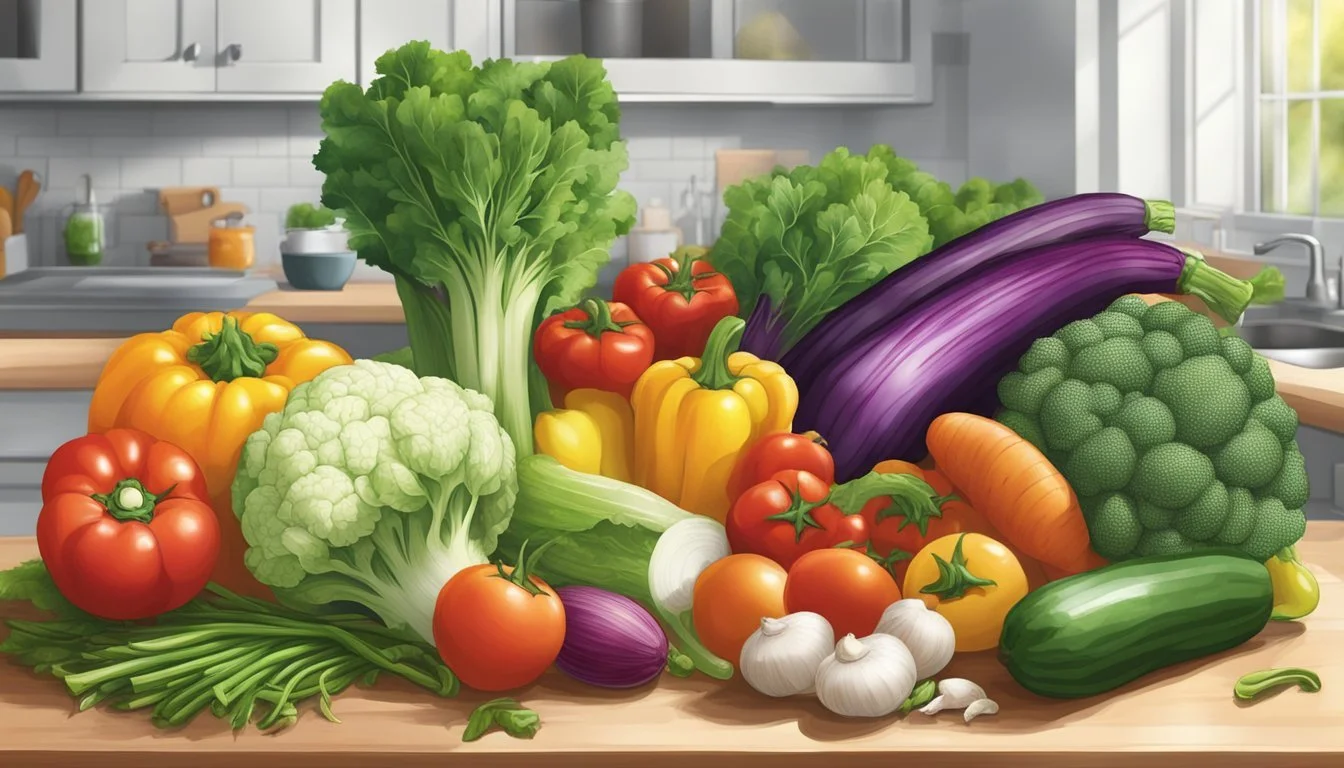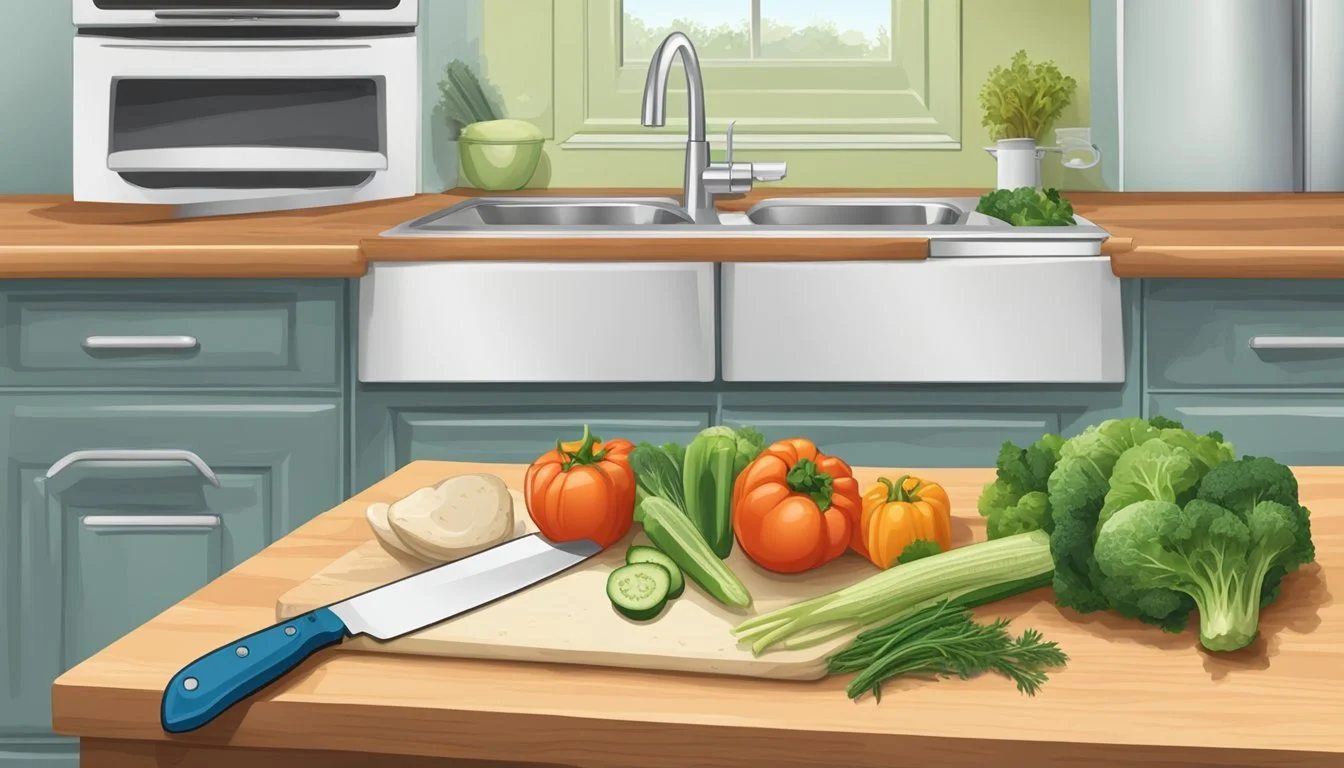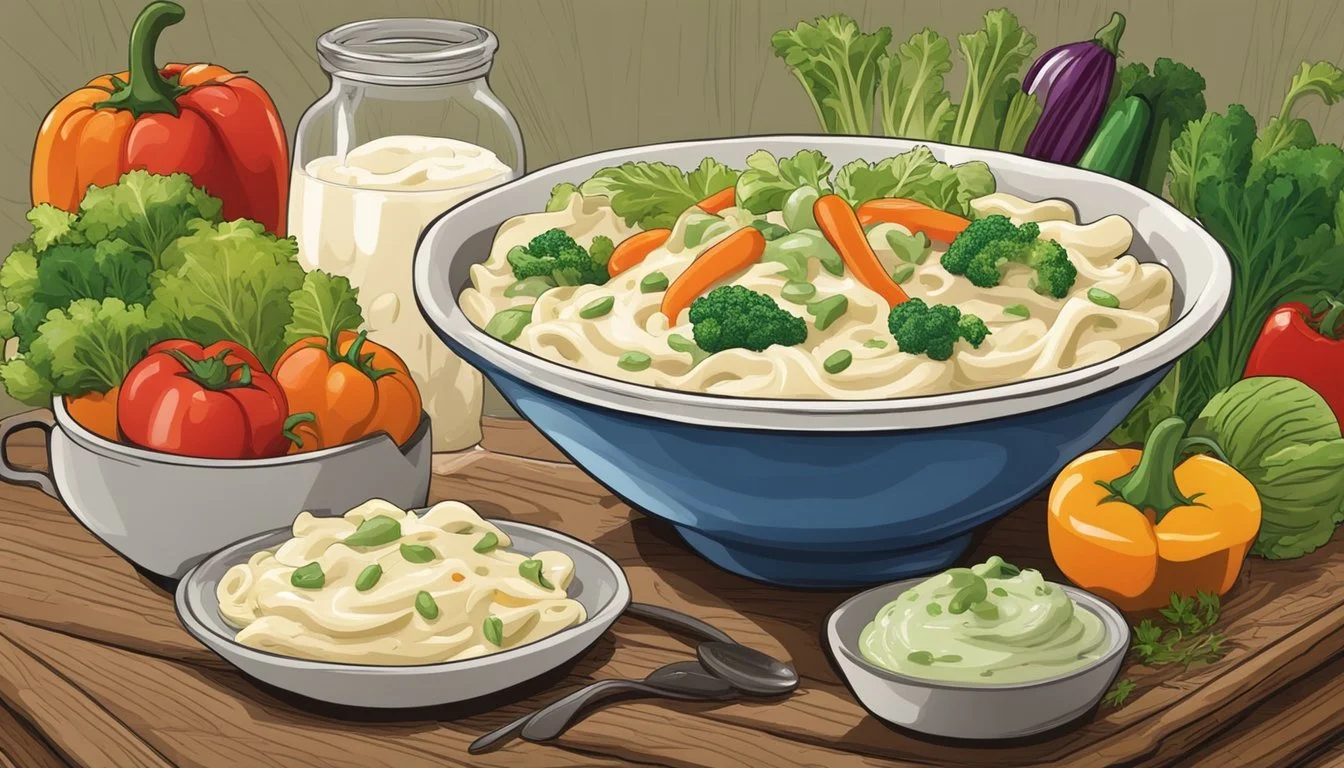How Long Does Alfredo Vegetable Medley Last?
Storage Tips and Shelf Life
When it comes to enjoying a delicious Alfredo vegetable medley, understanding its shelf life is essential. Homemade Alfredo vegetable medley typically lasts about 3-5 days in the refrigerator. The absence of preservatives in fresh ingredients contributes to this shorter lifespan, demanding proper storage to maintain its quality.
Store-bought Alfredo products have a longer shelf life due to added preservatives. Once mixed with vegetables, it's best to consume the dish within the same timeline as homemade variants. Properly sealing the leftovers in airtight containers can help retain freshness for a few extra days.
The combination of fresh veggies and Alfredo sauce offers a delightful meal, but attention to storage practices is key. Enjoying this dish within the recommended period ensures optimal taste and safety.
Understanding Alfredo Vegetable Medley
An Alfredo Vegetable Medley combines the rich, creamy elements of Alfredo sauce with a medley of nutritious vegetables. It features a balanced blend of flavors and a variety of essential nutrients.
Ingredients Profile
The main ingredients typically include a mixture of broccoli, carrots, and cauliflower. The creamy Alfredo sauce is made with butter, garlic, heavy cream, and Parmesan cheese. Salt and black pepper are commonly used to enhance the taste.
Additional seasonings such as Italian seasoning and herbs may be added for extra flavor. The butter provides a rich base, while the cheese adds a robust taste. This combination offers both a satisfying texture and an appealing flavor profile.
Nutritional Information
This dish is nutrient-dense due to its diverse ingredients. The vegetables contribute essential vitamins and minerals. For example, carrots provide Vitamin A, and broccoli offers a good amount of Vitamin C and fiber.
The Alfredo sauce is high in calories, protein, and fat, particularly saturated fat, due to the butter and cheese. This can lead to a higher sodium content, but it also supplies significant amounts of calcium and iron. The overall combination ensures a balanced intake of carbohydrates, potassium, and other vital nutrients.
The dish strikes a balance between indulgence and nutrition, making it a versatile addition to meals.
Proper Storage Techniques
Proper storage techniques for Alfredo vegetable medley ensure its freshness and safety. Key considerations include correct refrigeration and effective methods for freezing and thawing.
Refrigeration Best Practices
Store the Alfredo vegetable medley in airtight containers to prevent bacterial and mold growth. Place the container in the refrigerator promptly after preparation to maintain a safe temperature.
The shelf life in the refrigerator is generally 3-5 days. To check for spoilage, observe any changes in smell, texture, or color.
Maintaining a consistent refrigerator temperature of below 40°F (4°C) is crucial. Ensure the container is sealed properly to avoid cross-contamination from other foods. Label the container with the date of preparation to monitor its freshness.
Freezing and Thawing
For longer storage, freezing the Alfredo vegetable medley is effective. Transfer portions into airtight, freezer-safe containers.
The medley can last in the freezer for up to 3 months. Before freezing, let the medley cool completely to prevent ice crystals from forming, which can affect texture.
When ready to use, thaw the medley in the refrigerator overnight. Avoid thawing at room temperature to minimize bacterial growth. After thawing, heat thoroughly before serving to ensure it’s safe to eat.
Label containers with both the freezing date and expiration date to keep track of its shelf life.
Assessing Quality and Freshness
To determine if your alfredo vegetable medley has maintained its quality, focus on visual indicators, taste, smell, and color changes. These factors are essential to identify signs of spoilage.
Visual and Taste Indicators
Assess the freshness by examining the color and texture of the vegetables and sauce. Vegetables should remain vibrant and crisp. If the medley shows any sign of discoloration or a shift to a duller hue, it may be a sign the food has deteriorated. The sauce should retain a creamy appearance without separating or curdling.
When tasting, ensure the vegetables maintain their original flavorful punch and crispness. Any metallic or bitter taste indicates spoilage and the dish should be discarded. Additionally, avoid consuming if there's mold present, as this is a clear sign the food has gone bad.
Smell and Color Changes
Smell is another key indicator. The alfredo vegetable medley should emit a pleasant, creamy aroma. If there is an off odor or the smell is sour, it's a signal the dish is no longer fresh. Be cautious of any rancid or ammonia-like scents.
Color changes in the sauce and vegetables can also indicate spoilage. While vegetables may darken slightly, any significant changes to brown or grey signify the food has likely gone bad. The sauce should remain its typical creamy color; any appearance of yellowing or separation could also indicate loss of quality.
Safety Considerations and Health Risks
Proper storage and handling of Alfredo Vegetable Medley are crucial to avoid foodborne illnesses and spoilage. Identifying unsafe leftovers can help prevent health risks.
Foodborne Illnesses and Spoilage
Food safety is paramount when dealing with leftover Alfredo Vegetable Medley. The dish, which often contains dairy and cooked vegetables, is prone to bacterial growth if not stored correctly. Staphylococcus aureus and Listeria monocytogenes are common bacteria that can flourish in improperly stored foods.
Leftover Alfredo Vegetable Medley should be refrigerated within two hours of cooking to minimize the risk of bacterial contamination. The refrigerator's temperature needs to be below 40°F (4°C) to inhibit bacterial growth. Consuming spoiled leftovers can lead to foodborne illnesses, marked by symptoms like nausea, vomiting, and diarrhea.
Recognizing Unsafe Leftovers
Visually inspecting and smelling leftovers can help determine if an Alfredo Vegetable Medley is safe to eat. Look for signs such as mold growth, changes in color, or an off-putting odor. If any of these are present, the leftovers have most likely gone bad and should not be consumed.
Check the texture as well; a slimy or sticky consistency indicates spoilage. Using a food thermometer, ensure that reheated leftovers reach an internal temperature of at least 165°F (74°C) before consuming.
By recognizing these signs, one can prevent foodborne illnesses and ensure that the Alfredo Vegetable Medley remains safe to eat.
Preparing and Reheating
Preparing and reheating an Alfredo vegetable medley correctly ensures it maintains taste and texture. Key methods include the use of an oven, air fryer, and stovetop.
Oven and Air Fryer Methods
For reheating in the oven, preheat to 375°F (190°C). Place the Alfredo vegetable medley in a glass or ceramic baking dish. Add a small amount of liquid such as water or broth to keep it from drying out. Cover the dish with foil to trap moisture and retain quality. Bake for about 15-20 minutes, stirring halfway through to ensure even heating.
Using an air fryer requires setting the temperature to 350°F (175°C). Spread the medley evenly in the air fryer's basket. It's crucial to stir the vegetables every 5 minutes to avoid overcooking certain areas. Reheating should take approximately 10-15 minutes. Adding a bit of water or broth can help maintain the sauce's creaminess without separation.
Stovetop Reheating
For stovetop reheating, use a saucepan over medium to low heat. Add the Alfredo vegetable medley along with a small amount of water, milk, or cream to rehydrate the sauce. Stir continuously to prevent sticking and maintain a smooth texture. This approach helps repress separation and keeps the sauce well-emulsified.
It's recommended to reheat for about 8-10 minutes, checking frequently to avoid overheating. Consistent stirring is crucial for ensuring uniform temperature and preventing certain vegetables from becoming too mushy. Reheating on the stovetop offers better control over the dish's consistency and flavor.
Ensuring proper refrigeration of leftovers is essential. Store in an airtight container and use within 3-4 days to maintain the best quality. Following these methods will keep the dish delicious and enjoyable.
Creative Uses for Leftover Alfredo Vegetable Medley
Leftover Alfredo Vegetable Medley offers versatile culinary opportunities. From transforming dishes to enhancing your social media feed, it can be an asset in your kitchen.
Integrating Into New Meals
Leftover Alfredo Vegetable Medley can be incorporated into various pasta dishes effortlessly. Simply toss it with cooked pasta for a quick meal.
Layer it in a baking dish with cooked summer squash and cheese to make a baked vegetable medley.
Use it as a topping for pizzas and flatbreads. Spread the Alfredo vegetable medley on a pizza crust, add roasted vegetables, and finish with some grated cheese.
For those who enjoy Italian cuisine, mix it with rice or quinoa for a hearty side dish.
Sharing on Social Media
Food enthusiasts can share their creative uses of Alfredo Vegetable Medley on platforms like Instagram.
Snap a photo of your unique side dish or pasta creation, and use hashtags such as #leftovers, #ItalianCuisine, and #VegetableMedley to attract like-minded followers.
A visually appealing plate can spark ideas for others while showcasing your culinary skills. Engaging descriptions and tagging relevant food communities can help enhance your reach and followers.
Maintaining Dietary Balance
To maintain dietary balance while enjoying Alfredo Vegetable Medley, it's crucial to be mindful of macronutrient and micronutrient intake.
Protein is essential for muscle repair and growth. Adding a source of protein like grilled chicken or tofu to the Alfredo Vegetable Medley can enhance its nutritional value.
Fats in Alfredo sauce, primarily from cream and cheese, can add richness. However, it's important to monitor the intake of saturated fat to support heart health. Using low-fat dairy products can reduce saturated fat content.
Sodium is present in both Alfredo sauce and some vegetables. Reducing the amount of added salt or opting for low-sodium ingredients can help maintain healthy sodium levels.
Potassium is abundant in many vegetables. Including a variety of vegetables like spinach and tomatoes can boost potassium intake, which is beneficial for cardiovascular health.
Fiber** is important for digestive health. Incorporating high-fiber veggies such as broccoli and carrots can increase the fiber content of the dish.
Sugar content in Alfredo Vegetable Medley is typically low, but be cautious of any added sugars in pre-made sauces.
Understanding the calories per serving helps in maintaining energy balance. Combining the medley with whole grains like quinoa or brown rice can provide carbohydrates for sustained energy.
Striving for balanced portions ensures that each serving of Alfredo Vegetable Medley contributes to a well-rounded and nutritious diet.









